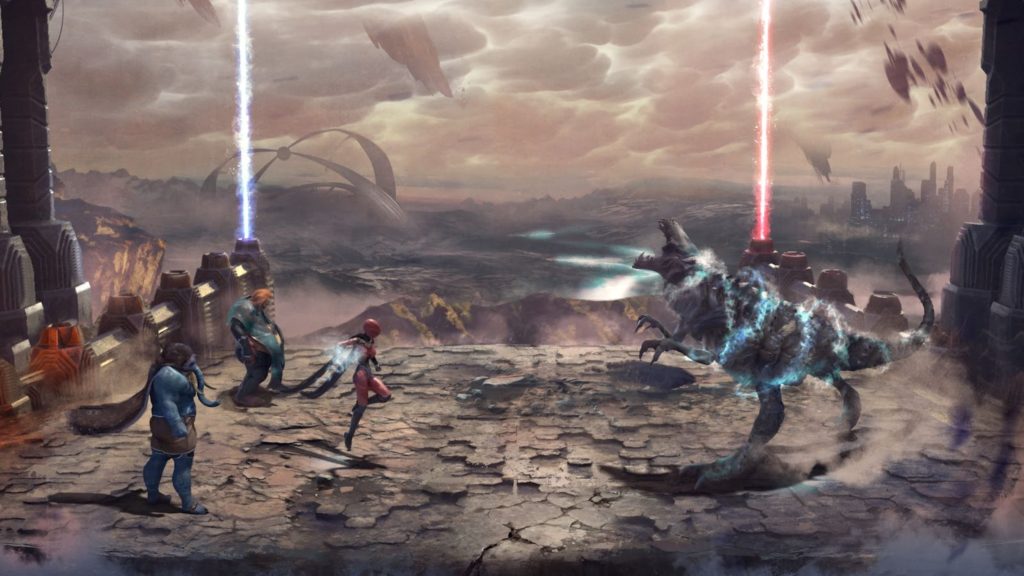
2022-3-16 19:52 |
With blockchain technology evolving at an unprecedented rate, you’ll often notice new terms thrown around the internet and social media forums. “Web 3.0” and “metaverse” are two such terms hanging on the tip of every tongue these days.
As the world struggles to familiarize itself with the fundamentals of concepts that are still a long way from fully formulated, many people are using the terms Web 3.0 and metaverse interchangeably without even realizing that they aren’t the same thing. For most users, it is quite easy to get confused between these two terms, primarily because both are in some way connected to the decentralized future of the internet and social media.
How Web3 And The Metaverse Will Complement Each OtherFirst things first – Web 3.0 and the Metaverse aren’t the same things. Even though both concepts are still in their infancy, Web 3.0 encompasses the vision of a decentralized worldwide web – one that’s free from censorship and centralized organizations. On the other hand, metaverse refers to a realistic virtual space that seamlessly integrates with our everyday lives.
Now that we have settled that Web 3.0 and metaverse are two distinct concepts, let’s look at what each means. Web 3.0 is the next logical evolution of the internet, designed to overcome the limitations of the present version of the internet (Web 2.0). For instance, the Web 2.0 infrastructure is dominated by centralized organizations, which has led to users losing control over their data and privacy. Social media platforms, search engines, and almost every other aspect of the internet are primarily controlled and managed by a handful of big tech companies.
Web 3.0 aims to remove centralized control and give back control to the users. In this decentralized version of the internet, users will be able to produce, manage, share, and monetize their content without any censorship or intermediaries. Simply put, Web 3.0 is designed to address the issues related to ownership and control in Web 2.0. As of now, several Web 3.0 concepts like NFTs (non-fungible tokens), DAOs (decentralized autonomous organizations), and play-to-earn (P2E) games are already bringing in a paradigm shift in both creator and consumer behaviors.
On the other hand, the metaverse is the concept of a virtual space powered by technologies like blockchain, augmented reality (AR), and virtual reality (VR). Think of the metaverse as an immersive experience of real-world things in the digital space. The metaverse will consist of distinct three-dimensional worlds, including gaming, fashion, lifestyle, social media, learning platforms, and much more.
Although Web 3.0 and metaverse are two distinct concepts, they are destined to complement each other in forging the future of the internet. The core vision of Web 3.0 is to build an open, transparent, decentralized, and inclusive ecosystem where no single entity has control over users’ data and assets. The metaverse, too, is open, inclusive, and decentralized by design.
The connection between both realms is the underlying blockchain technology and the many features they collectively offer. Both Web 3.0 and metaverse focus on nurturing shared economies, in addition to offering users complete control and ownership over the assets they purchase, create, or earn. Moreover, both Web 3.0 and the metaverse are free from centralized authorities and intermediaries, thereby unlocking multiple revenue streams for users.
Web 3.0-based solutions will enable the different worlds within the metaverse to seamlessly connect and integrate, thus allowing users to easily move between ecosystems without worrying about intermediaries, unnecessary fees, and data security along with privacy.
Leveraging The Best Features Of Both ConceptsWhile several metaverse projects are using Web 3.0-based technologies, we are looking at two projects that are spearheading the efforts of bringing metaverse mainstream.
First up on our list is Bit.Country Metaverse Network, better known as Bit.Country. This application framework and blockchain provide the infrastructure required to build user-generated metaverses. The platform, built on top of the Polkadot network, allows users to build their personal metaverses without any technical requirements. Users can also create their own economies, NFTs, and gamified products within these metaverses to incentivize their individual communities.
Overseen by blockchain industry leader Ray Lu, Bit.Country is well-positioned to bring a paradigm shift in social communication by leveraging the features of Web 3.0, blockchain technology, and the metaverse in tandem. The platform has also launched the world’s first Metaverse Career Academy, enabling users to learn and start a career in the metaverse to further empower users.
The next project worth highlighting is SPACE, a social commerce metaverse platform. SPACE provides a powerful suite of builder, order, and sales management tools, enabling users to design, build, manage, and monetize immersive commercial spaces.
During its Alpha launch, the platform acquired more than 10,000 users and upwards of 100 partnerships with leading brands from the art, fashion, and music industries. This unique intersection of the metaverse brings individual metaverses into a unified trading hub, impressing a consortium of venture capital funds. Dapper Labs, Coinfund, Animoca Brands, Digital Currency Group, and several others, have already injected $7 million into the project to date.
Although different concepts, Web 3.0 and metaverse are both parts of the same future. Web 3.0 will provide the basic infrastructure on which the metaverse will thrive. Web 3.0 primitives like NFTs, peer-to-peer content sharing and storage, decentralized wallets and exchanges, decentralized marketplaces, and other similar products and services will be the key drivers of the metaverse.
origin »Metaverse ETP (ETP) íà Currencies.ru
|
|









